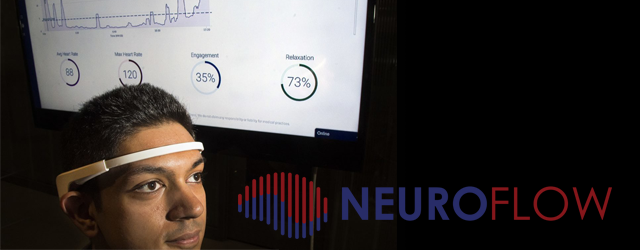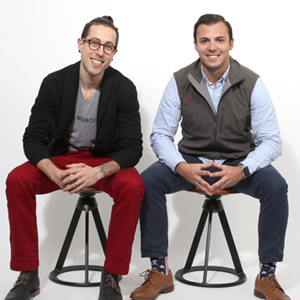This Philly-Made Tool Can Help You Train Your Brain to Calm Down
When Clark Griswold tried to blanket his home in Christmas lights, an electrical glitch rendered the facade completely dark. But it was his gruff in-laws who added insult to injury. “Beautiful, Clark,” said one. The other called it a “silly waste of resources.”
This is a scene from the 1989 classic National Lampoon’s Christmas Vacation. But you don’t need to summon Chevy Chase to feel some sort of way at the mere mention of your in-laws.
Finances, gift-giving and, yes, difficult family members all contribute to higher levels of stress during the holiday season. Now, thanks to a Philadelphia startup, there’s an app for that.
A Wharton grad and a Penn Ph.D. student last year founded NeuroFlow, a startup that’s developed software to interpret brain waves and heart rate to measure relaxation and help patients and clinicians visualize how external stressors trigger physical reactions.
The software shows that even the mention of one’s in-laws can set off in some people a physiological response – that gut-level feeling of uneasiness – and can then illustrate exactly how meditation and mindfulness techniques impact the body and brain. But the tool, now in beta and used by a handful of mental health professionals, has applications far beyond the holiday season. Its founders are planning a full launch in February, and believe their platform will ultimately help de-stigmatize mental illness by helping people see it, rather than just feel it.
A lofty goal for a company with eight full-time employees run by a couple of twentysomethings.
“We know it’s a stressful time of year, yet what we found is that the conversation around mental health, around anxiety, around stress is such that there’s this negative stigma,” said CEO and co-founder Christopher Molaro, 29, an Iraq war veteran and Wharton MBA who founded the company in large part to address post-traumatic stress disorder. “I think it’s because if you can’t understand something, measure something, see something, you just push it aside as something that doesn’t exist.”
Read the full article here.





